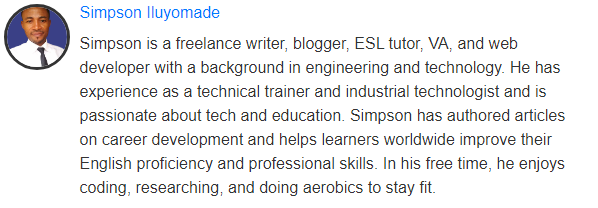The Educator’s Dilemma: Teaching Critical Thinking in a World of Misinformation

In today's digital age, educators face a unique set of challenges when it comes to teaching critical thinking skills. With the rapid spread of misinformation and the pervasive presence of digital distractions, fostering an environment where students can develop and apply these essential skills is more difficult than ever. This blog post explores the challenges educators encounter, highlights the importance of teaching critical thinking, and offers strategies to overcome these obstacles.
The internet has revolutionized access to information, but it has also become a breeding ground for misinformation.Social media platforms amplify fake news, and biased content, making it harder for students to discern truth from falsehood.
Digital distractions, such as smartphones and social media, compete for students' attention, often hindering deep learning and critical analysis.
Key Challenges in Teaching Critical Thinking
1. Proliferation of Misinformation: Misinformation spreads faster and more widely than factual information, according to a study by MIT (Vosoughi, Roy, & Aral, 2018). Read more about the study. Also,the echo chamber effect, where algorithms organize content that aligns with existing beliefs, reinforces misinformation.
2. Intellectual Biases and Confirmation Bias: Students often fall prey to intellectual biases that distort their perception of information.Then Confirmation bias leads individuals to favor information that confirms their preconceptions, which can limit critical thinking and open-mindedness.
3. Digital Distractions and Reduced Attention Spans: The constant presence of digital devices has shortened attention spans, making it harder for students to engage in sustained critical thinking. Research by Microsoft suggests that the average human attention span has decreased from 12 seconds in 2000 to just 8 seconds today. More information on this research can be found here
.
4. Lack of Critical Thinking Skills in Curriculum: Many educational systems do not emphasize critical thinking as a core component of the curriculum. Educators often lack the training and resources needed to effectively teach critical thinking.
Personal Experience: Navigating Digital Distractions in the Classroom
A few months ago, I encountered this challenge firsthand while teaching a high school student from Saudi Arabia online. He was learning English as a second language (ESL), and besides his limited English proficiency, communicating with him was difficult because he was often absentminded during lessons. I employed various strategies to engage him, but nothing seemed to work, and I found myself repeating instructions multiple times😒🤔.
After observing his behavior closely, I noticed that his attention was inconsistent; sometimes, he was focused and engaged, while other times, he was unresponsive and distracted. It took me over two months to discover that the root of the problem was his smartphone👍. During our lessons, he would often be on his phone, distracted by social media or other digital contents, which severely impacted his ability to concentrate on the lesson.
Upon realizing this, I spoke to him about the importance of staying focused during our lessons and how his smartphone use was hindering his progress👌. Once we addressed this issue, his behavior changed dramatically. Our classes became more interactive and engaging, and his English proficiency began to improve significantly🙌. This experience underscored the impact of digital distractions on students' ability to learn and highlighted the need for educators to address these challenges proactively.
The Importance of Teaching Critical Thinking
• Empowering Students: Critical thinking equips students with the skills needed to analyze information, make informed decisions, and solve problems effectively.
• Promoting Civic Engagement: Informed citizens are crucial for a healthy democracy. Critical thinking fosters the ability to evaluate news and participate in civic discourse.
• Preparing for the Future:In a rapidly changing world, the ability to think critically is essential for adapting to new challenges and opportunities.
Strategies for Promoting Critical Thinking in the Classroom
1. Integrating Media Literacy: Teach students how to critically evaluate sources of information, identify bias, and differentiate between credible and non-credible sources. Utilize resources from the Center for Media Literacy, which offers tools and lesson plans for educators 👉🏼 read here
2. Encouraging Open Dialogue and Debate: Foster a classroom environment where students feel comfortable discussing different viewpoints and questioning assumptions. Use structured debates to encourage students to think critically and defend their positions with evidence.
3. Implementing Problem-Based Learning (PBL): Use real-world problems and scenarios to encourage students to apply critical thinking skills in a practical context. The Buck Institute for Education provides resources and guidelines for implementing PBL in the classroom👉🏼 here.
4. Promoting Mindfulness and Focus: Incorporate mindfulness practices to help students improve focus and reduce digital distractions. The Mindful Schools organization offers training and resources for integrating mindfulness into education 👉🏼 read here
5. Encouraging Metacognition: Teach students to think about their thinking by reflecting on their intellectual processes and biases. Encourage journaling and self-assessment activities to help students become more aware of their thought patterns.
The Role of Parents in Mitigating the Educator’s Dilemma
Parents are indeed the first educators of society, playing a vital role in shaping their children's ability to think critically and navigate the world of information. While educators have the responsibility to foster critical thinking skills in the classroom, parents can support and reinforce these efforts at home. Here are some ways parents of toddlers, teens, and adults can contribute to reducing the impact of misinformation and digital distractions:
For Toddlers and Young Children
1. Encourage Curiosity and Questioning: Foster an environment where asking questions is welcomed and encouraged. When young children ask questions, it helps them develop critical thinking skills and a sense of curiosity about the world around them.
2. Monitor Media Consumption: Parents should be mindful of the content their children are exposed to and ensure it is age-appropriate. Engaging in media alongside their children can provide opportunities for discussions about what they see and hear.
3. Model Critical Thinking: Demonstrate critical thinking in everyday situations. For example, when reading a story or watching a show, parents can ask open-ended questions like, "Why do you think that character made that choice?" or "What do you think will happen next?"
For Teens
1. Promote Media Literacy: Teach teens how to evaluate the credibility of sources and recognize bias in media. Encourage them to verify information before accepting it as true and discuss the impact of misinformation.
2. Set Boundaries for Technology Use: Establish clear rules around screen time and encourage breaks from digital devices. Parents can help teens find a balance between online and offline activities to reduce digital distractions.
3. Encourage Open Discussions: Engage in conversations about current events and encourage teens to express their opinions and thoughts. Discussing different perspectives can help teens develop a more nuanced understanding of the world.
For Adult Children
1. Encourage Lifelong Learning: Support adult children in continuing to develop their critical thinking skills. Encourage them to take courses, read books, and stay informed about world events.
2. Foster an Environment of Dialogue: Maintain open communication and encourage discussions about news, media, and social issues. This can help adult children develop their critical thinking skills and avoid falling into the trap of misinformation.
3. Lead by Example: Show adult children the importance of critical thinking by demonstrating it in your own life. Make informed decisions, question information, and engage in thoughtful discussions.
Conclusion
The Path Forward for Educators
Teaching critical thinking in today’s world of misinformation and digital distractions requires a united effort from both educators and parents. Educators must implement strategies like media literacy, problem-based learning, and mindfulness to combat these challenges. Meanwhile, parents can support this by encouraging curiosity in young children, promoting media literacy and balanced tech use in teens, and fostering ongoing dialogue and example-setting for adult children. Together, these efforts can build a strong foundation for critical thinking, enabling students to navigate the complexities of modern information and become informed, thoughtful individuals. By working collaboratively, we can ensure that critical thinking remains a cornerstone of education and personal growth.
Further Reading and Resources
• Stanford History Education Group:
https://impact.stanford.edu/organization/stanford-history-education-group
• Common Sense Media: https://www.commonsensemedia.org
• FactCheck.org: https://www.factcheck.org
• Digital Citizenship Network:https://www.digitalcitizenship.net
• MediaWise:https://www.poynter.org/mediawise
• The New York Times Learning Network: https://www.nytimes.com/section/learning
• "How to Teach Critical Thinking" by ThoughtCo provides a comprehensive overview of methods and strategies for educators: https://www.thoughtco.com/critical-thinking-definition-with-examples-2063745
If you need career guidance, training or personalized support, feel free to contact SIEBLOGS via any of the contact details below this page. You may also visit our service page to explore our offers👍.
Sieblogs…… informing, educating, and inspiring you to thrive in an ever-changing world!
About the author:

Published : 2 September, 2024 | 18:05:45
Location : Africa
👀68 Views.

Comments
Great piece of information 👍
Leave a Comment